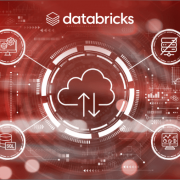To unlock new opportunities, improve agility and accelerate innovation, enterprises are moving their business applications to cloud. The challenge is how to do it properly. The goal is reduce any disruptions in daily operations, and assure both current and future business and technology needs are met. Further, there are concerns about choosing the right architecture, avoiding vendor lock-ins, compliance with security standards, avoiding cost overruns and complexities of application re-platforming.
A successful seamless data and analytics migration to the cloud requires a well-defined, structured approach to planning and execution.
Evaluating Key Factors for the Cloud Migration Process
Planning is key for successful migrations, some critical factors need to be evaluated:
1. Network and security
Network first, ‘security’ next, everything else follows, before any other component, consider network design. This includes data connectivity between Data Centres (DC) and cloud to ensure seamless connectivity among enterprise infrastructure components.
2. Current architecture
Every enterprise that tries cloud migration will have several architectures that appear equally promising. It may further happen that all these options appear to check all the right boxes, thus clouding the decision further. In such scenarios, a POC becomes imperative.
3. Migration and maintenance costs
Total cost of ownership (TCO) is the sum of all costs involved in the purchase, operation, and maintenance of a given asset during its lifetime which reflects in time frame of 3-5 years. Migration to cloud may not bring cost-savings at all or the savings may not be realized upfront.
4. Stakeholder communication
Facilitate buy-in from your stakeholders through a multi-year TCO view, managing conflict of interest between business and IT.
5. Desired migration timeline
Migration to cloud is impacted by and impacts typical enterprise initiatives, visualizations, data center changes, platform upgrades, and major transformation.
When to Avoid Cloud Migrations
Despite of all high value there may be certain applications and process still need to be on-premise due to following:
- Security and Compliance: Security and Compliance applications based on local regulatory requirements still considered to managed on-premise for better control
- Low Latency Applications: Low latency applications need to be redesign and rearchitect as apart of migration, Example, Applications running on mainframes cannot be migrated to the cloud without modernizing or refactoring for the cloud.
- Proprietary Hardware Platforms: Applications like Oracle Exadata, AWS S3 and Oracle Google Anthos, Amazon S3 running on engineered systems that cannot be re- hosted.
- Offline applications: Applications dependent on a physical machine (e.g.: Scanner requiring a specific MAC address, App requiring specialized hardware drivers that cannot be virtualized, Apps requiring to read biometrics) or applications running on ship, remote mines where internet is not available all time.
- Sunset Application: Applications which will be decommissioned in few years or near feature, as the TCO cost will not be realised before application discontinued
Pitfalls With Data and Analytics Leading to Failure
Based on industries best experience following could be possible reason(s) for cloud migration failures
- Expectation mismatch: Set right expectation with stakeholders is very critical.
Example: Cloud lift and shift just move your infrastructure to cloud but any slowness due to complex logic or business process will remain even after migration. - Skill Gaps : One of the biggest reason’s organizations delay moving into the cloud is that they lack IT personnel trained in cloud technology. When it comes to the cloud, business leaders are concerned about not having the expertise to handle the cloud migration and ongoing management of their cloud infrastructure.
- Incorrect Choices : Create candidate architectures for future state involving choice of cloud vendor, technologies, and tools. Compare alternative architectures & agree on the best fit per the success criteria specified in the define phase
- Change Resistance : Change resistance another salient challenge which exists in many organizations but not visible upfront, cloud brings lot of cultural shift in organisation where skill transformations, opportunities and legacy ethos need to be changed.
- Org Misalignment : No common consensus building between business and IT stakeholders, other Platform transformation/upgrade in progress while cloud migration needs better synchronisation and alignments.
Tools and Services for a Successful Cloud migration
Cloud migration tools help determine costs, capacity, and prerequisites of your cloud landscape configuration before the team embarks on your migration journey. Below is a selection of tools that are commonly used during a migration and adoption readiness assessment to help foster a successful migration.
Cloud Service Provider (CSP) – Tools
These tools are specific to service providers and mostly assessment results are biased towards offering provided by vendors, some common examples as below:
Managed Service Provider (MSP)- Solutions and Frameworks
These solutions and frameworks provide the best combination of all cloud offerings and are tailored for your organization. A product agnostic solution framework will not only provide you with a product assessment but will provide an end to end roadmap of transformations.
Our Infocepts Cloud Migration Solution leverages our proven framework for cloud strategy, assessment, and road mapping to craft an execution-focused, holistic cloud strategy. In addition, Infocepts cloud migration accelerators provide expedited, error free and cost-effective migration approach with low risk and planning.
Your cloud migration is just the beginning of your journey. Expected TCO require continuous rationalization, monitoring, service operation to achieve your strategic goals.
With Infocepts you realize the intended benefits without disruption, and with no surprises in your cloud cost bill. Get started today on your cloud migration journey!
Recent Blogs

What Retail Media Can Learn from Instacart’s AI Strategy
June 24, 2025

Beyond Chatbots: How Agentic AI Is Automating High-Stakes Business Decisions
June 11, 2025

From Batch to Real-Time: The Future of Data Distribution Using Databricks Delta Sharing
June 4, 2025

Accelerating Databricks Serverless Adoption with Agentic AI & Proven Practices
May 29, 2025


